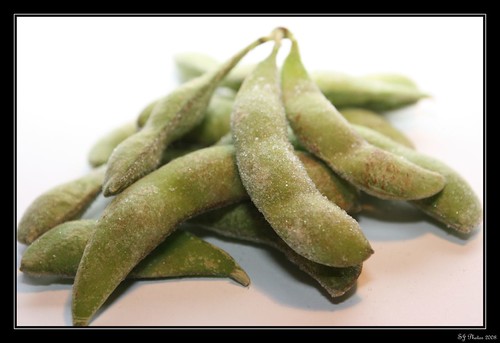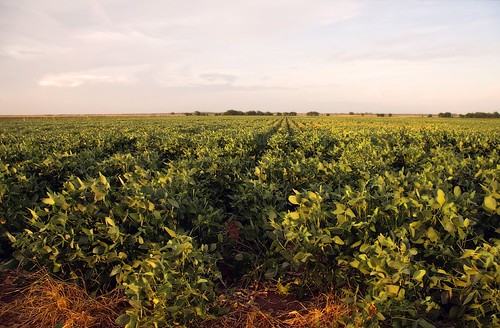Classification

How are Soybeans Classified?
Domain- Eukarya
Kingdom- Plantae
Phylum- Magnoliophyta
Class- Magnoliopsida
Order- Fabales
Family- Fabaceae
Genus- Glycine
Species- Glycine max
Soybeans, Glycine max, belong to the domain Eukarya because it has a true nucleus with membrane-bound organelles. It is included in the kingdom Plantae because it contains the characteristic traits of undergoing photosynthesis, having cellulose, and being multicellular. The phylum it belongs to is Magnoliophyta. Members of this phylum are also known as flowering plants, or Angiosperms. Magnoliopsida is the class soybeans belong to. Members of this class are most commonly known as dicotyledons, or dicots. A cotyledon is the embryo within the seed of the plant. A dicot is an embryo that possesses two cotyledons. Soybeans are found in the Fabales order because they have a unique pistil in which a single carpel develops into a pod that holds seeds (See the characteristics page to understand where the carpel is). Next, Glycine max is classified in the family Fabaceae. This family is characterized by flowering plants, and is more commonly known as the legume family (think peas!).
Soybeans fall under the genus Glycine because it belongs to the bean family. Finally, Glycine max is the species, or scientific name, of this organism. It is different from all other species in the Glycine genus because is the only erect plant. All other species in this genus either twine or climb.
The Soybean Tree

This Phylogenetic Tree is based on morphological characteristics related to Glycine max. It is unique in showing relationships to the species Medicago sativa (Alfalfa) and Helianthus annuus (Sunflower).
Singing soybean fields forever yet? (hum to the tune of Strawberry Fields...)
Click here to see how soybeans have adapted over the years.


